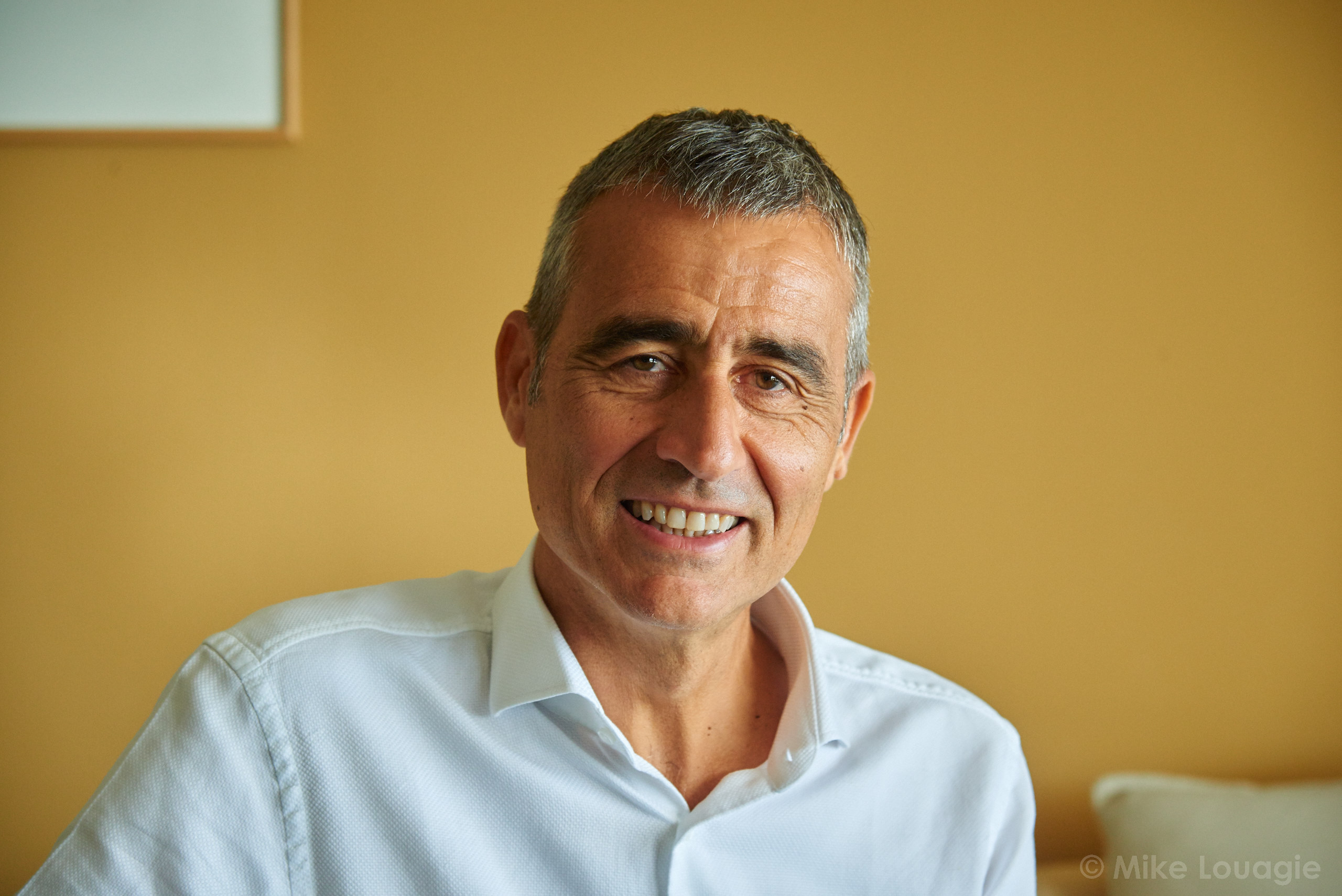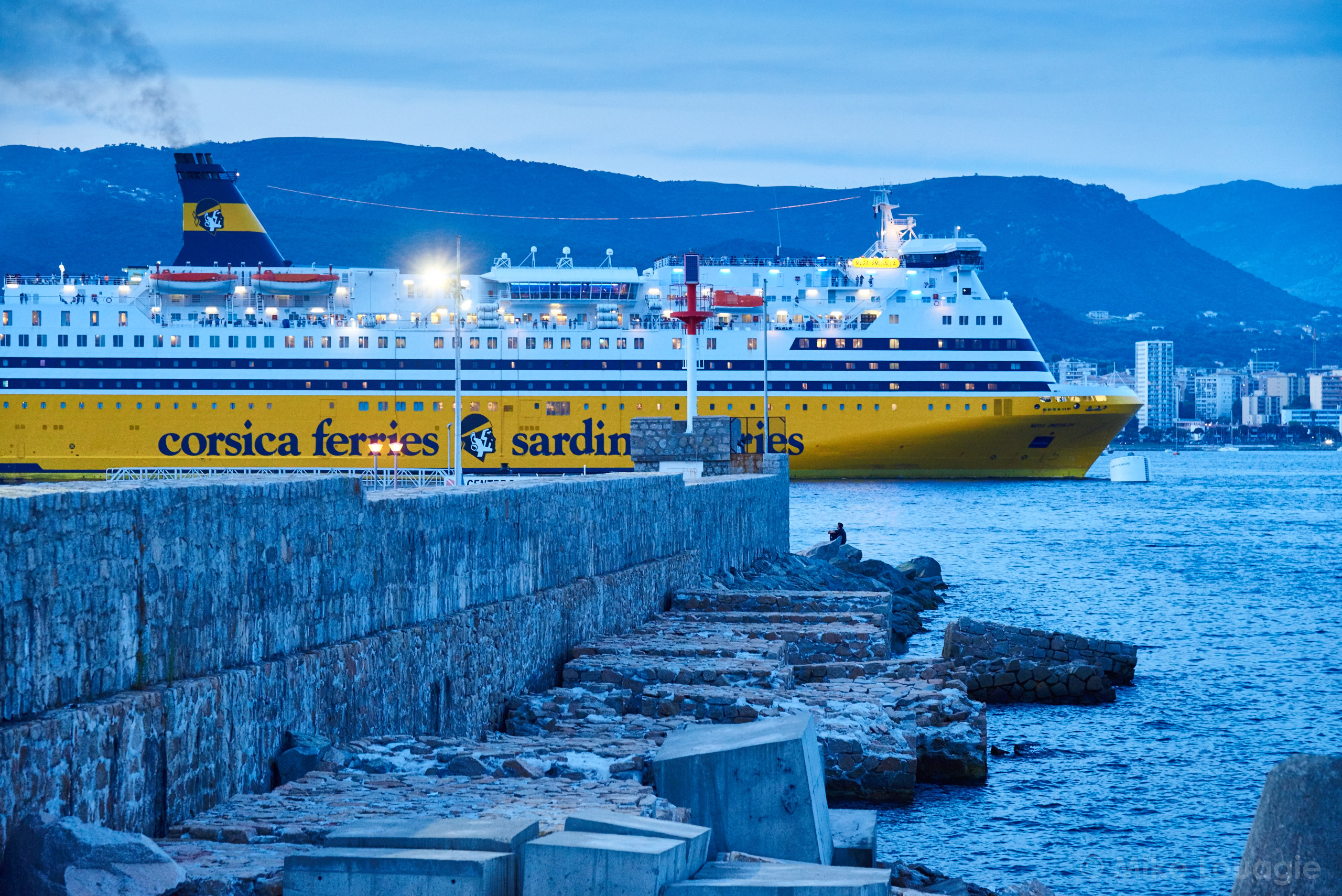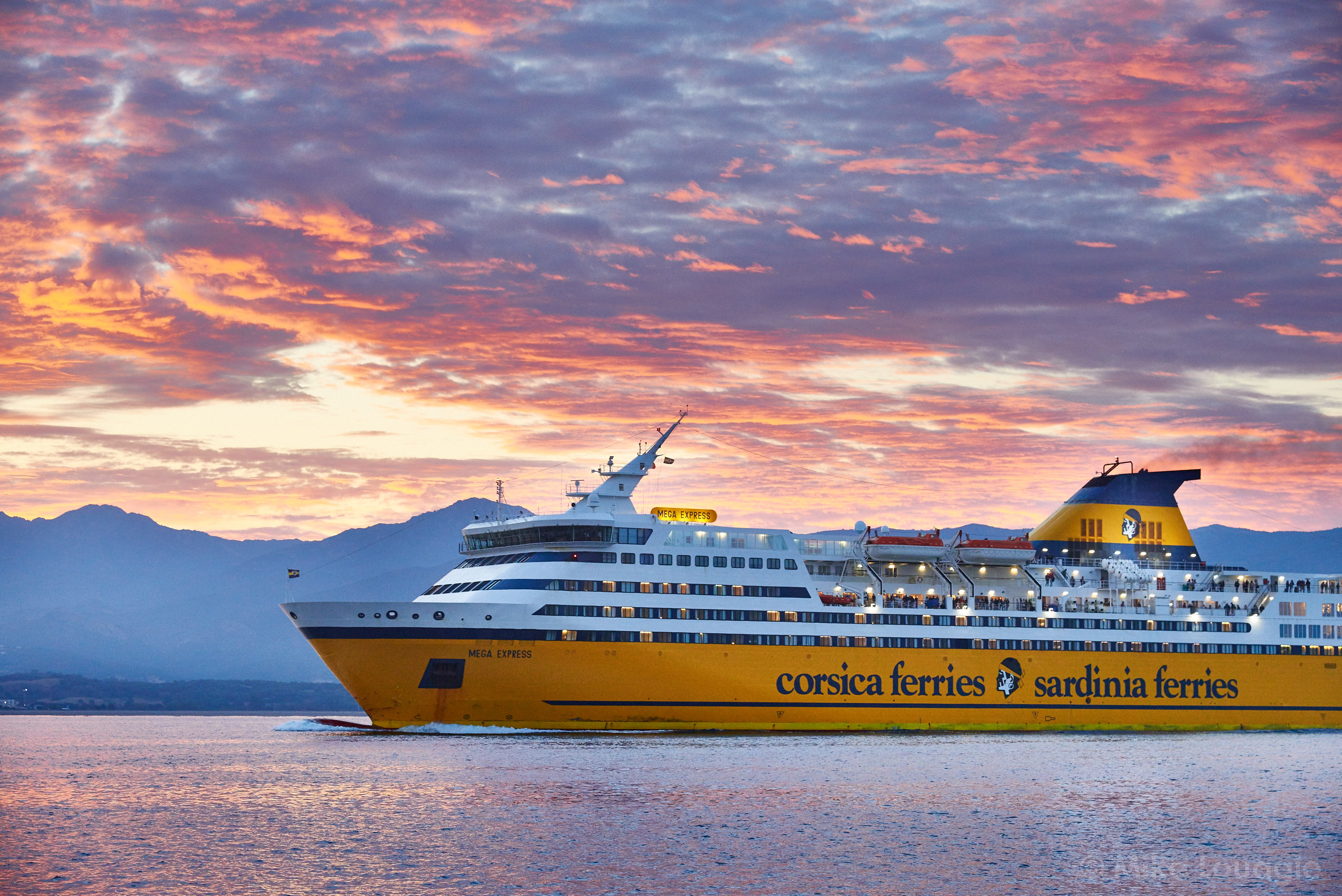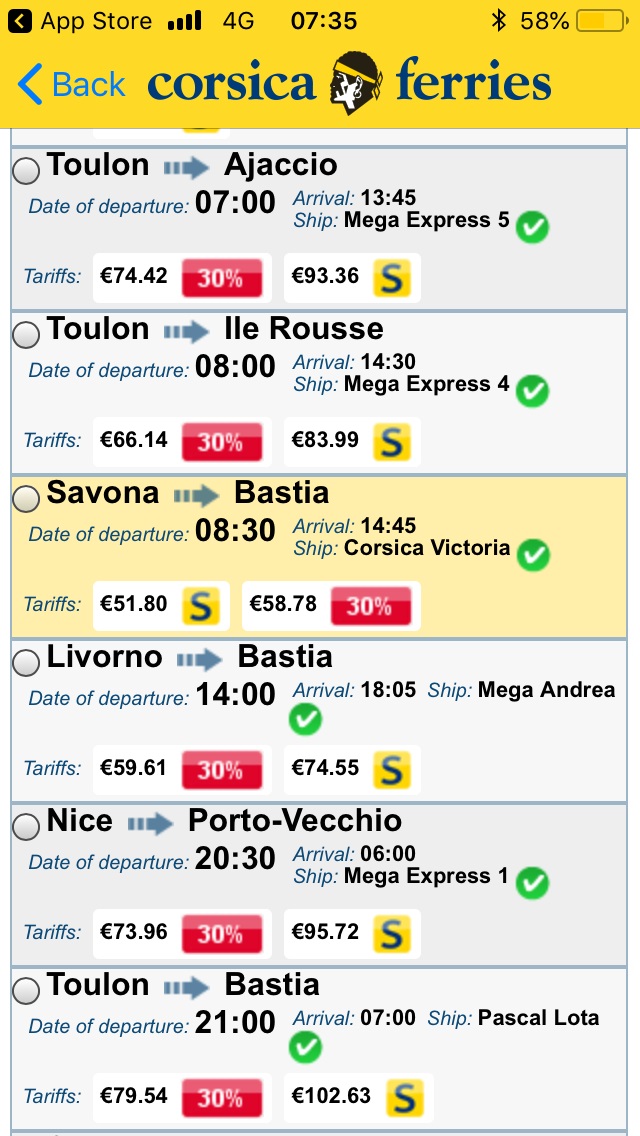Does the tourist still prefer his own car, rather than flying and rent a car?
Yes. It is so simple to be able to carry all these extra things with you, in your own car, like the bikes of the children etc.
Rental cars are really for short stays. People coming by ferry stay longer.
How did the number of tourists evolve during the last years (on Corsica)?
In general there was a rise, however, the airlines brought more people and in fact created a new market. It is often people who take to opportunity to travel cheaply and to have a short stay on the island.
When is your high season? Do you see an expansion of this season?
This year was phenomenal, because of a coincidental good distribution of public holidays. May was like July. Just because we celebrated the end of WW2 and Ascension Day during the week of 5 to 12 may we saw a rise of 20%.
Normally the season starts at Easter and ends in October. We see a new trend, with more people at the end of the season.
Corsica Ferries is active on social media. I have been through some Facebook posts and was shocked by some comments. Some people are just brainlessly shouting. How do you handle these online extremists?
It is very difficult to handle. Facebook is like a pub, and you have to accept that some people shout and are being gross.
I believe there is a growing maturity, where most people understand that some comments are violent.
If what they say is pertinently false, we respond. But it doesn’t make any sense to answer to insults.
If it is a matter of quality we try to answer too. We are not always right of course. But you cannot manipulate the debate. You have to let live the social media and you have to cope with it.
You have obviously put a lot of energy in your booking app. Can you tell what the strong point is?
Via our app we wanted to digitalize the customer care by offering one-to-one solutions. For example, if we have a delay or a technical issue, we send a clickable link to our customers. It allows them to find alternative solutions.
It is something we developed during our crisis with PASCAL LOTA, which suffered a technical breakdown. We had to inform 80,000 passengers. “You are booked on the Bastia departure of August 3. Unfortunately you will not be able to sail on this one but you can change to any of these (suggested) routes.” It worked really well. If the initial voyage was more expensive we refunded.
End of 2017 the ownership of the company changed. Who are the owners now?
It was a management buy out by the five highest-ranked managers of the company. I am co-owner with three French and one Italian.
A last, personal question: doesn’t this huge responsibility as owner prevent you from sleeping?
It doesn’t really change. I started as a CEO at a fairly young age. I was director of Corsica Ferries in 1993, and CEO in 1998. My everyday life hasn’t changed. I have always been fighting for the company, even before I was the co-owner.
Last Saturday I was here at two o’clock in the night, because there was an issue.
I have always managed this company with my guts, and that’s why we didn’t want the company to be sold. We wanted to preserve its DNA. We decided to keep the disruptive spirit, as in May 68.
Thank you Mr Mattei, and good luck with the decision for the new ships.
Mike Louagie






